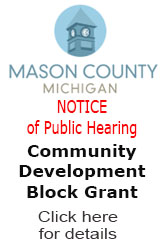 Good Neighbor Tips. A blog by Erin Doan State Farm Insurance Agency.
Good Neighbor Tips. A blog by Erin Doan State Farm Insurance Agency.
You may routinely reach for a hand tool when you have a job to do, but don’t short-change safety when you use it. Hand tools cause bruises, punctures, broken bones and far more serious injuries each year. Before you start your next DIY project, review these safety tips:
Select the Right Tool
Choose the right tool for the job. You might believe you’ll save time using the same tool for different tasks, but you could increase your chances for injury.
Each hand tool can come in various sizes, styles and designs suited for specific tasks or functions. For example long-handled tools are best for jobs needing more leverage, and insulated tools are appropriate for electrical work. Because using a hand tool repeatedly potentially can harm your joints, muscles and nerves, consider ergonomics—the tool’s efficiency and comfort.
Keep these suggestions in mind:
Choose a tool that fits your hand.
Look for friction on tool handles to enhance your grip.
Opt for a more secure full-hand power grip over a finger grip.
Avoid tools that could cut or pinch your hands when gripping them.
Follow these guidelines to get a better idea of the tool you need for your job.
Use Tools Correctly
Even the right tool can harm you if you use it incorrectly. Read the manufacturer’s safety instructions before using the tool. In addition, follow these suggestions:
Cut materials at a 90-degree angle to avoid chipping the edge of the blade.
Direct blades away from your body and others while cutting.
Hold your wrist straight when using the tool.
Keep your elbows low and slightly bent when using heavier tools.
Use vises to secure your project.
Avoid working in awkward positions that could injure your back.
Don’t expose your tools to extreme heat—it can make them brittle.
Get more tool-specific safety tips, here.
Maintain Your Tools
Before each use inspect tools for damage or potential hazards. Look for deficiencies such as cracks in handles, “mushroomed” heads on impact tools and worn-out springs. If any part of your tool is damaged, consider replacing it. Fixing or modifying your tools could prove dangerous.
After using tools, clean them and store them in a dry place to maintain their optimal lifespan. Learn more tips for maintaining your tools properly.
Protect Your Body
Don’t start your project until you’ve donned protective gear. The essentials include goggles or safety glasses, and closed or steel-toe shoes. Gloves that provide a good grip can help protect your hands from cuts and blisters.
Learn more safety tips for using hand and power tools from the Occupational Safety and Health Administration.
The information in this article was obtained from various sources. While we believe it to be reliable and accurate, we do not warrant the accuracy or reliability of the information. These suggestions are not a complete list of every loss control measure. The information is not intended to replace manuals or instructions provided by the manufacturer or the advice of a qualified professional. Nor is it intended to effect coverage under any policy. State Farm makes no guarantees of results from use of this information. We assume no liability in connection with the information nor the suggestions made.
This blog has been brought to you by Erin Doan State Farm Insurance Agency of Scottville. 231-757-3115. www.erindoan.com



















.jpg)























 (1).gif)












.png)






